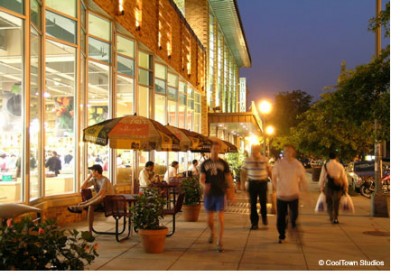Evidence piling up for health and CoolTowns

If anecdotal evidence isn’t enough for you (ever notice the weight difference in people as you walk in a Walmart in suburbia vs. a main street in the city?… or travel from the city to the suburbs on the subway and see the size of people getting on board increase rather noticeably?)
Well, here’s yet more scientific evidence, highlighted on the front page of Monday’s Washington Post, and adding to that already being collected in this part of the blog.
– A major University of Maryland study last year found that people who live in the most sprawling counties are the most likely to be overweight.
– University of British Columbia (Lawrence D. Frank) study this month showed that people who live where stores and other businesses within easy walking distance are significantly less likely to be overweight, primarily because they walk more and drive less.
– Federal health officals are helping develop model planning codes to promote walking.
“We drive to everything. We’ve created the perfect environment for creating obesity.” James O. Hill, weight researcher at the University of Colorado Health Sciences Center
“Having shops and services near where one lives is the best predictor of not being obese.” Lawrence D. Frank
“Walking is the most common and readily available physical activity.” Andrew L. Dannenberg of the CDC’s National Center for Environmental Health.
“We know that we can educate people and motivate them to exercise and that works okay for a short time, but within six months to a year most people are no longer active… with the built environment, if you build it right in the first place, people seem to automatically incorporate activity into their lifestyle, and their weight is controlled as long as they are there.” James F. Sallis, director of the Active Living Research Program at San Diego State University

Leave a Reply